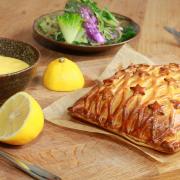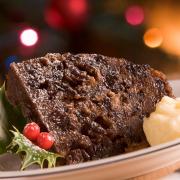Pain de Campagne is a traditional sourdough brought to you by Artisan Foodworks, of Burscough.

As artisan bakers they attract new converts by supporting the Real Bread Campaign’s annual Sourdough September, which celebrates and promotes the benefits of slow fermentation breads made in a traditional way without unnecessary processing aids. Sourdough is also known as The King of Breads and has a fearsome reputation among both home bakers and professionals, but once a few basic fundamentals are in place it is quite an easy bread to make.
Ingredients:
Overnight Fementation
160g Wheat Starter
50g Wholemeal Flour
150g Strong White Flour
120g Water
Final Dough
300g Refreshed Leaven (above)
100g Wholemeal Flour
320g Strong White Flour
8g Salt
280g water
Method:
First, you will need some starter from a local Artisan Baker. Starter is a mixture of flour and water and natural yeasts from the air that is fermenting over a period of weeks, months, years and occasionally centuries. The starter is fed on a regular basis to keep the balance of yeasts, carbon dioxide and lactic acids to provide the sour back notes to Sourdough bread.
If you have any trouble getting some starter you can start your own or pop into our Bakery during September and we will let you have some for a small donation to the Real Bread Campaign.
Mix the starter, flours and water in a bowl with a wooden spoon and leave covered at an ambient temperature over night. The yeasts in the starter will feed on the new fuel (flour) and you will have a lively leaven the following morning.
The following day knead the flours, water and salt until the dough becomes elastic and the gluten has formed. Leave the dough to rest for ten minutes to allow the gluten strands to relax.
Mix in the leaven and gently knead without breaking down the all important gluten structure of the dough. The dough will be very soft but will have some structure. Bear in mind that the natural yeasts are slower working than bakers or active yeasts so the development of flavour is deeper and the dough much softer and more delicate.
Leave to prove for two to three hours or until the dough has risen and is light to the touch.
Gently turn the dough out of the bowl onto a lightly dampened work-bench maintaining the air bubbles within the dough. Smear water onto your hands and gently stretch the dough to about an A3 size without breaking the structure and leave to rest for two minutes. The dough will be very wet, which is good – don’t be tempted to add more flour!
Stretch the dough to the point of resistance firstly towards yourself and fold back two thirds onto itself and repeat to the right and the left, but with the left fold the dough all the way over. Finally taking the flap of dough furthest away from you fold down over the whole dough to create a neat package.
Shape the dough with damp hands by turning the dough with the heel of your hands on the bench so there is some resistance to create a ball with tight surface tension.
Place the dough with the side top down in an oiled plastic bowl or a cane banetton proving basket and cover with a shower cap or plastic bag to create a warm humid atmosphere. Leave to prove until the dough has risen to about 1.75 times its pre final proof size.
Pre heat a baking sheet or baking stone and carefully turn the very soft dough out onto the stone and score the surface with a knife or razor blade. Place in a hot oven of about 230C for ten minutes. Reduce the temperature to 210C for a further 30/35 minutes.
Once the loaf is cooked, the sides are firm and the base sounds hollow when tapped carefully place the loaf on a cooling rack.
You can find more information on Sourdough September online at www.sustainweb.org/realbread. Artisan Foodworks hold breadmaking classes and open days. For more information contact Julie or David Peeks on 0845 860 2141.



























